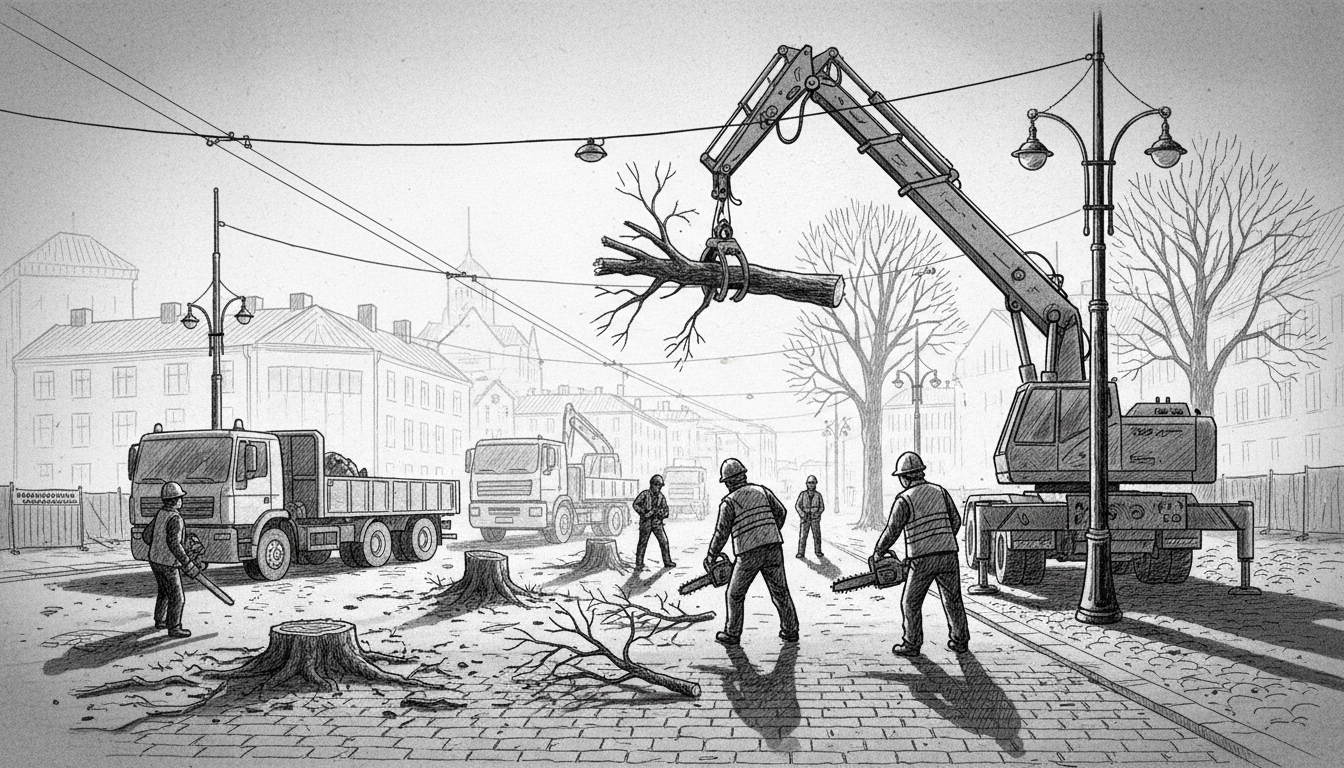A major renovation project on Mäkelänkatu street in Helsinki has commenced with overnight tree removal operations. Workers began cutting down over 100 linden trees during nighttime hours to prepare for the extensive infrastructure overhaul.
The tree removal started between Monday and Tuesday night and will continue for four consecutive nights. Crews work from approximately midnight until morning while trams are not operating. This timing ensures safety near tram power lines.
City officials explain the overnight schedule protects both workers and public transportation systems. The darkness provides safer conditions for handling trees near electrical infrastructure.
Approximately 250 linden trees currently line Mäkelänkatu. The renovation requires removing just over 100 mature trees. The city has committed to replanting new saplings to replace those removed.
The comprehensive street renovation spans more than one kilometer between Kumpulantie and Hämeentie. The project will update municipal utilities, road structures, and address deteriorating trees.
Transportation officials warn residents to expect significant disruptions. Traffic congestion is anticipated, particularly during Tuesday morning commute hours. Public transportation routes will also experience changes and delays.
Local transit authority HSL will provide specific updates about public transportation adjustments. Commuters should check their routes before traveling through the affected area.
This type of major urban infrastructure project reflects Helsinki's ongoing maintenance of its public spaces. The city frequently schedules such renovations during warmer months to minimize weather-related delays.
Similar street renovations have occurred throughout Helsinki in recent years. The city follows a systematic approach to maintaining its urban infrastructure while balancing environmental concerns and public convenience.
The tree replacement program demonstrates Helsinki's commitment to maintaining its green canopy. The city has one of Europe's highest ratios of urban trees per resident.
International residents and visitors should note that such construction projects are common in Nordic cities during summer months. The region's short construction season means multiple projects often occur simultaneously.
The Mäkelänkatu renovation represents typical Nordic urban planning priorities. It balances immediate inconvenience with long-term infrastructure improvements that will serve residents for decades.
Local businesses along the construction route may experience temporary challenges. Pedestrian access will remain available throughout the project, though some sidewalk areas will be temporarily closed.
The project timeline extends through the construction season. Residents can expect periodic updates from city officials as work progresses through different phases.

